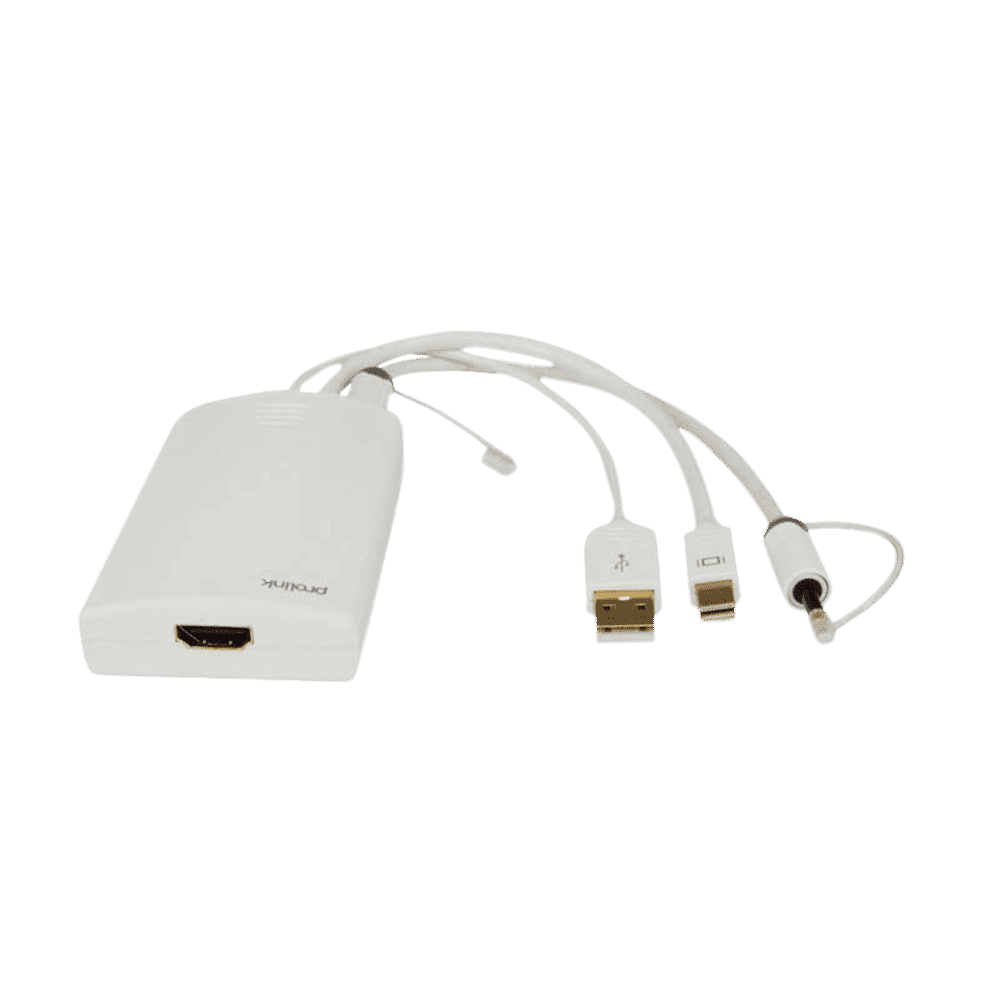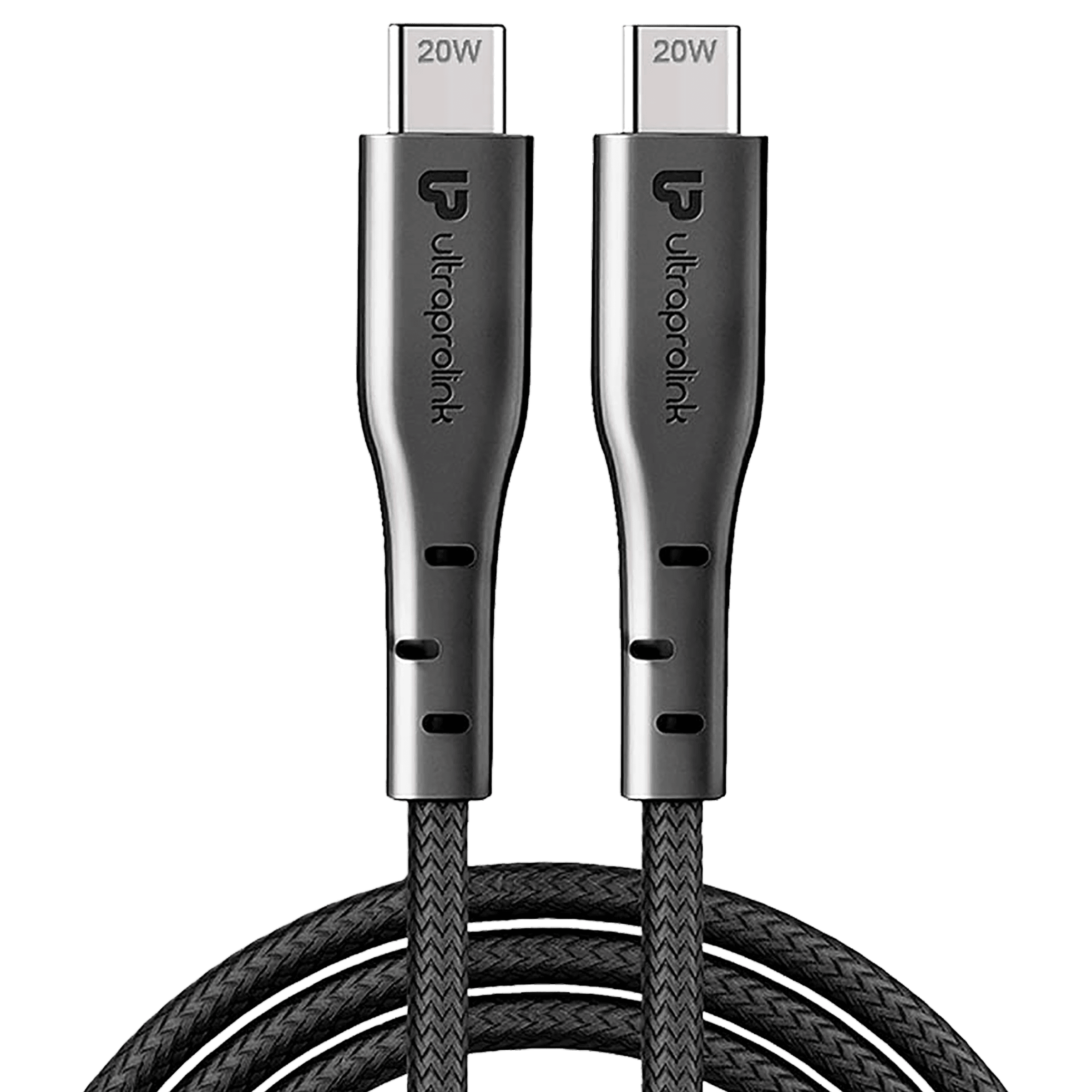%20(Presentation)%20(1600%20x%20600%20px)(104)-e7981044-6d08-4425-b3f9-f97c6bfbc443.webp&w=3840&q=75)
Consumer Electronics
•04 min read

Buy ultraprolink USB 3.1 Type C to USB 3.1 Type C, USB 3.0 Type A, HDMI USB Hub (Bi-Directional Flow, White) online at best prices from Croma. Check product details, reviews & more. Shop now!
Imagine a world where every device connects seamlessly, eliminating the clutter of incompatible cables and making everyday tech interactions effortless. With Tata Neu, you not only stay ahead with cutting-edge technology but also earn NeuCoins and benefit from express delivery for a hassle-free shopping experience. The shift from the traditional USB-A to the modern USB-C is transforming the way we charge, share data, and embrace a universally connected digital ecosystem. This evolution empowers consumers with solutions that bridge the gap between legacy and contemporary devices, encouraging a smarter, more integrated approach to technology.
For decades, USB-A has served as the standard rectangular connector; it was the go-to option for connecting peripherals to computers and other devices. However, with the proliferation of modern technology, USB-C has emerged as a smaller, reversible, and versatile connector. With its ability to support faster data transfer, higher power delivery, and universal compatibility, USB-C is quickly setting the pace for the future of connectivity.
The inherent advantages of USB-C, such as enhanced data speeds and improved power capacity, make it the ideal choice for today’s tech-savvy users. Unlike USB-A, which may struggle with the demands of contemporary devices, USB-C ensures smoother interactions across diverse product ecosystems, meeting the expectations of those seeking reliable performance.
When comparing the two, the design differences are immediately evident. USB-A’s larger, non-reversible design contrasts with the compact and reversible nature of USB-C. Furthermore, USB-C cables often support higher data transfer rates and more robust power delivery capabilities, which are essential for modern devices ranging from smartphones to high-powered laptops.
USB-A to C cables allow users to connect older devices with modern USB-C ports, ensuring that tech investments remain viable even as new standards emerge. These cables act as the perfect bridge, maintaining the functionality of traditional devices while enabling the benefits of the latest technology.
With USB-C to A adapters, it becomes easy to integrate legacy peripherals with new USB-C devices. Whether it’s for charging or transferring data, these adapters offer a seamless connection, allowing a USB-C device like a smartphone or tablet to interact with older USB-A accessories without any hassle.
Consider a scenario where you wish to connect your new USB-C smartphone to a USB-A laptop or charger. Using a type A to C adapter ensures that the process is both simple and efficient, affirming the practicality of USB A to C converters in everyday technology use.

Buy ultraprolink VoLo PD20 Type C to Type C 3.2 Feet (1M) Cable (480 Mbps High Speed Data Transfer, Black) online at best prices from Croma. Check product details, reviews & more. Shop now!
One of the key benefits of USB-C is its ability to handle rapid data transfer, which means large files, high-definition videos, and extensive software applications can be transmitted quickly and reliably. Whether you are transferring data between computers or integrating peripherals across devices, USB A to C data transfer solutions provide the speed and efficiency expected in today’s digital age.
The transition from USB-A to USB-C isn’t limited to data handling. Modern USB-C technology enables faster charging through higher power delivery. A USB A to C charging cable bridges the divide between older chargers and new devices, ensuring that you can enjoy efficient charging speeds without sacrificing reliability.
Insight Corner: "Did You Know? USB-C can deliver up to 100 watts of power, making it ideal for fast charging laptops, smartphones, and other high-powered devices, according to industry specifications."
While USB-C promises a myriad of advantages, there can be challenges when connecting them to older USB-A ports. Certain compatibility issues might arise, but these are easily resolved by using certified and high-quality adapters and cables. This ensures optimal performance and mitigates risks that could impede device connectivity.
For consumers and professionals alike, making a smooth transition to USB-C involves a few smart choices, such as investing in hybrid cables and adaptive multiport solutions. These options not only accommodate existing legacy devices but also open up new possibilities through improved connectivity and performance.
As technology continues to evolve, the horizon of USB technology is expanding with innovations like USB4, which promises even faster data transfer and enhanced universal connectivity. This evolution builds on the foundations laid by USB-C and its predecessors, driving us towards a more integrated and efficient digital future.

Buy Apple USB Type C to USB Type A, VGA Port, Thunderbolt 3 USB C Multi-Port Adapter (Sync & Charge, White) online at best prices from Croma. Check product details, reviews & more. Shop now!
Products that convert USB A to C remain essential as they extend the life cycle of legacy devices while promoting the adoption of cutting-edge technology. The strategic use of a type A to C adapter or converter helps ensure that all devices, irrespective of their age, remain connected and functional.
Projected to become the universal standard for connectivity, USB-C’s adaptability and forward-thinking design are set to revolutionise how we interact with technology. This shift not only benefits users by reducing electronic waste but also streamlines the tech ecosystem to one that is more efficient, sustainable, and user-friendly.
Yes, you can use USB-A to USB-C converters or adapters to connect devices with different port types.
USB-A is rectangular and non-reversible, while USB-C is smaller, oval-shaped, and reversible.
Yes, USB-A to USB-C cables are widely available and designed to connect older USB-A ports to newer USB-C devices.
USB-C delivers DC (direct current) power, typically used for charging electronic devices.
USB-C supports faster data transfer rates compared to USB-A, especially when used with USB 3.1 or USB4 standards.
Look for certified cables and adapters that support high-speed data transfer and power delivery. Brands that adhere to industry standards ensure reliability and compatibility.
In summary, the evolution from USB-A to USB-C is more than just a change in connectors—it represents a significant step towards a more unified and efficient technological landscape. Understanding these advancements equips users to make informed decisions in their tech purchases, ensuring that they benefit from both enhanced performance and reliable connectivity. The integration of USB A to C solutions acts as a vital bridge between traditional systems and the future of digital interconnectivity, simplifying life and reducing e-waste. With Tata Neu, you can embrace this technological shift while earning NeuCoins and enjoying express delivery, making your shopping experience truly rewarding and hassle-free.